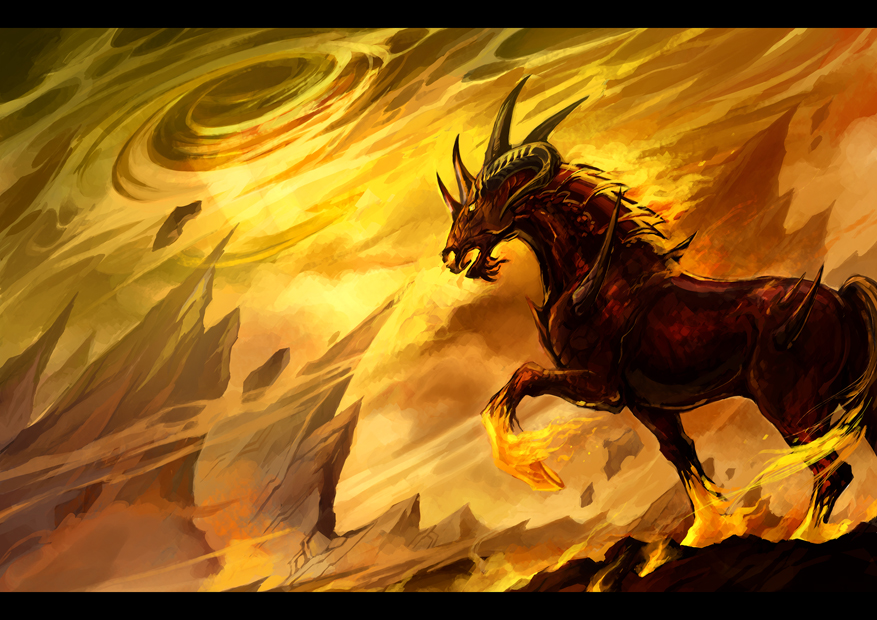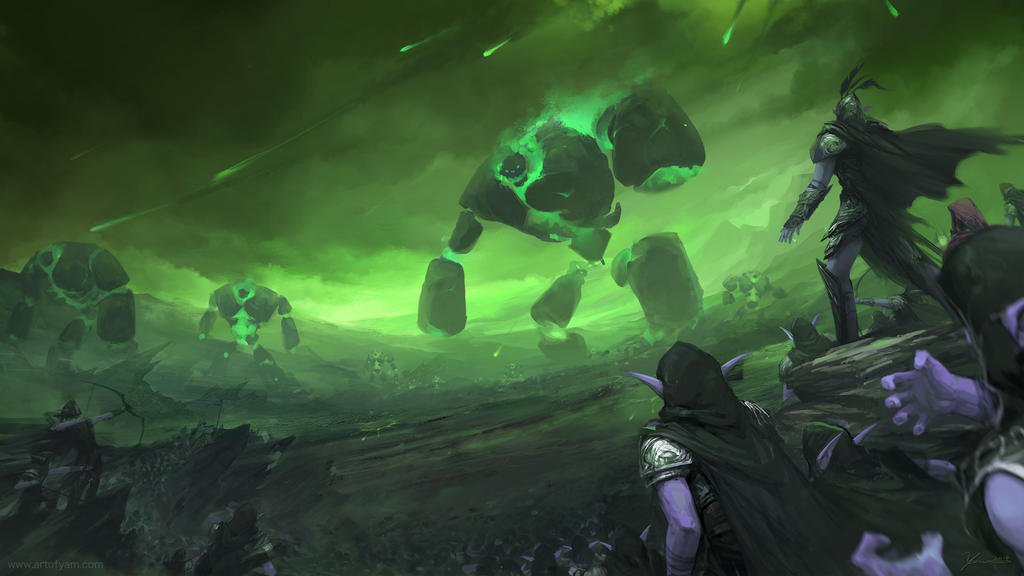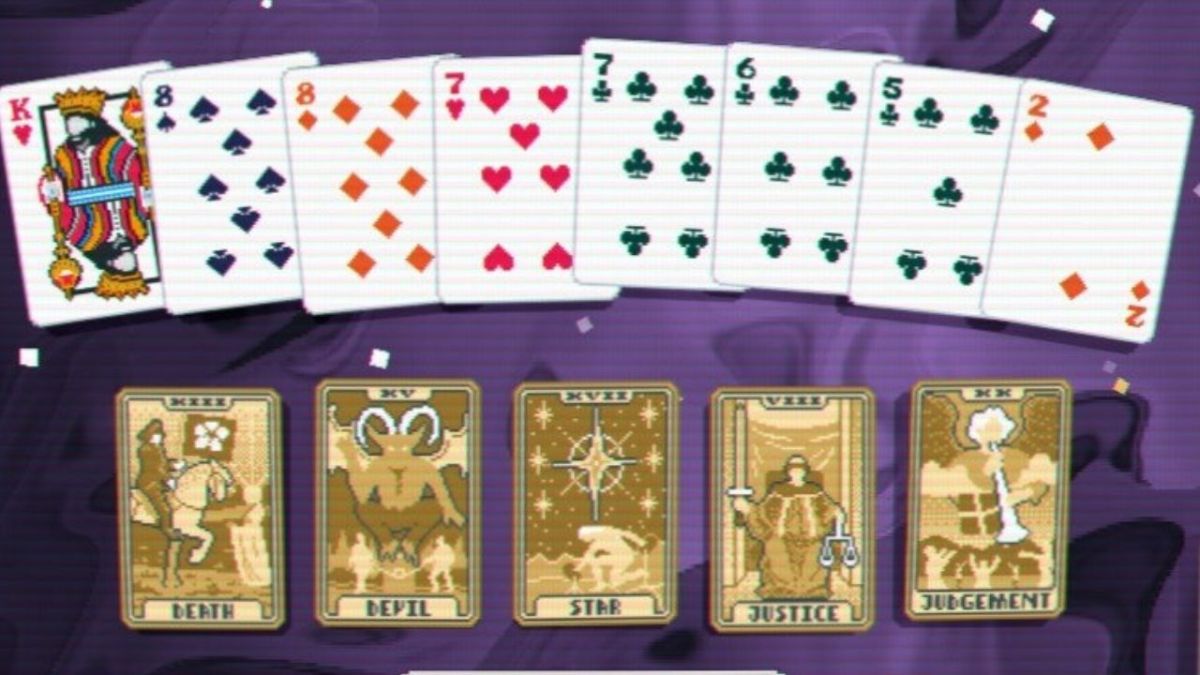Greetings, everyone. After my last article about the lore behind Gul’dan, the Warlock Hero, now it’s time to dive into some of the Hero’s most iconic cards.
At the same time, and because Warlocks are all about demons and dark powers, I’ll also do a brief overview of the Burning Legion.
So, without further ado, let us dive into…
The Warlock’s Hero Powers
Gul’dan’s iconic life-tap is rightly one of the most powerful hero powers in the game, as is ripped almost straight from the World of Warcraft spell that allows a Warlock to replenish his mana by sacrificing a percentage of his life.
As with most of World of Warcraft’s mana-gaining spells, the Hearthstone counterpart replenishes resources in the form of card draw. But more importantly, this helps define the Warlock thematically as a risk-taker, as someone who dabbles in dangerous powers.
Notably, the Warlock Hero was the first in Hearthstone who had the possibility of getting an alternate Hero Power, via demonic possession (or utter annihilation, one can never be sure) by lord-jaraxxus. He was then able to summon a infernal using inferno!. This is actually a trick used by many demon lord bosses in World of Warcraft, calling infernal reinforcements in the middle of the fight.

But its origins go back to the second invasion of the Legion, in Warcraft III, where, in the introduction cinematic, once could see one of the infernals fall across the sky and into a battlefield where orcs and humans were fighting. It’s an event that repeats itself on some of that game’s hardest missions.
The Warlock’s Minions
While there is a whole sub-section of the Warlock class devoted to the summoning of demons – Demonology – all Warlocks in World of Warcraft can summon and benefit from demonic companions.
Unlike hunters, who must hunt down and tame the beasts they wish to have as companions, and can do so to any beast they find, Warlocks gain their demons through increasing in level or specific quest, and can’t “tame” individual demons at will.
imp is the first demon that a Warlock learns how to summon, though in this case Hearthstone Warlock is much better served, with flame-imp available.
voidwalker (affectionately knows as “voidy”) was the next demon that a Warlock learned how to summon, and was a staple of the Warlock arsenal for a long time, especially before World of Warcraft’s first expansion. The voidwalker had a small subset of the Warrior’s tanking abilities, proving invaluable as the Warlocks protector and often allowing Warlocks to solo content that would have required two or three players.

Now succubus is really… Well, let’s just stick to the flavor text and say that “Warlocks have it pretty good.”. It’s no wonder that, while most World of Warcraft Warlocks don’t use her as their standard pet, many keep her around whenever not in combat.
doomguard is a fun one. In its current iteration, it’s just one more “cool-down”, a World of Warcraft expression that beans an ability that can be used semi-often and provides the player with increased burst damage for some seconds.
Years ago, it was much more interesting. A warlock needed help from other players to summon him – one of which would actually have to sacrifice health – and then the demon would show up and be out of control, possible killing players or even the warlock is the warlock could not subdue it in time. Yet again, the theme is that great power comes at great risk and cost. The Hearthstone card translates this well enough via the much less convoluted discard mechanic.
Finally, dread-infernal is a bit nicer to World of Warcraft Warlocks, only damaging their enemies, and doing so periodically, much like a friendlier version of baron-geddon.
While warlocks these days have it easy and get their infernal summoning spell just by increasing in level, earlier on it had to be acquired by doing a series of quests that culminated on an epic battle against an infernal in the Blasted Lands, near the Black Portal. One of my best World of Warcraft memories is of helping by Warlock friend with it, tanking the demon while he blasted him.
Another epic quest was the one for dreadsteed. Warlocks and Paladins were the only classes that could get specialized mounts, unlike all others players who had to buy them. But the quests were built-in such a way that a lot of gold was needed to buy special materials anyway, plus they required one to get a party and delve deep into several high-level dungeons.
This meant that many Warlocks and Paladins actually got standard mounts before they managed the logistics to get their class mount – but it was well worth it for the bragging rights and special effects.

A Moment in Remembrance of Wilfred Fizzlebang
Hearthstone’s second expansion pack, “The Grand Tournament” is mostly inspired in the “Argent Tournament” event that occurred during World of Warcraft’s third expansion, “Wrath of the Lich King”.
It was originally a tournament devised by tirion-fordring with the purpose of discovering who were the Horde and Alliance’s mightiest warriors, so that he could recruit them to mount his final offensive against Arthas, the Lich King. While in your average war, leaders usually want all the men they can get – to act as fodder, if nothing else – Fordring understood that this could not be the case when fighting the Lich King, as any dead warriors would just be resurrected by his necromancers and added to his army.
It was shortly after beginning the tournament’s main event that the players were introduced to wilfred-fizzlebang, who came to be one of the most notable Alliance warlocks, mostly due to his short existence. In fact, poor Wilfred dies almost immediately after having met the players.
He is supposed to summon a doomguard to test the player’s mettle. But he fails, summoning instead lord-jaraxxus, who immediately disposes of what he calls “a trifling gnome”.
It’s a shame that Wilfred was made into a card, as he would certainly have been appreciated as an alternate Warlock Hero!
Some More Notable Warlock Cards
In keeping with the overall Warlock theme, hellfire was one of the most unusual Warlock spells in World of Warcraft, a spell that would damage every enemy around the Warlock – but at the cost of his own health.

It was immensely popular because it allowed the Warlock to easily “farm” gold and materials by finding places where lower-level enemies were clumped together, going in, using hellfire, collecting the spoils, and repeating. The Hearthstone card is a bit more balanced, hurting the Warlock’s allies as well as his enemies and himself.
The twisting-nether is another “world”, a plane of chaotic, destructive, hungry energy that somehow connects to all other worlds. It is a bit like outer space, where planets float, but in a magical sense instead of a physical one.
It is everywhere and nowhere at the same time, and bridging the two realities amounts to considerable risk – yet this is what Warlocks do when they summon demons.
It was by opening tears into the twisting-nether that Ner’zhul inadvertently destroyed a great deal of Draenor and it’s denizens, and it is probably that event that inspired the current Hearthstone card.
Demons are native to the twisting-nether, and it is only there that they can be truly killed. Killing a demon in any other world merely sends their soul back into the nether, where their body will eventually reform. This is the main reason why the Legion is such a great threat and seems to have infinite armies – they can rarely be destroyed, only delayed.
Finally, imp-losion is notable because it is one of the few examples of World of Warcraft borrowing back from Hearthstone. Currently, only bosses use it, but one of Blizzard’s main points for the next World of Warcraft expansion is redesigning the Demonology Warlock to be more about summoning demons, and one of their new spells – Hand of Gul’dan – reflects that, being almost entirely based around imp-losion: it deals damage and summons a bunch of imps that will fight for the caster.
The Burning Legion
All the way through the lore articles, I’ve talked about the Burning Legion several times. It’s quite hard to go deep into most Warcraft plots without referencing the Legion.
The Legion is one of the two main antagonist forces behind almost every major threat ever face in Warcraft lore – the other one being the Old Gods. So what, exactly, is the Burning Legion? How did it came into being?
As explained in the Shaman Lore article and the League of Explorer’s Lore article, at one point Azeroth was ruled by the Old Gods and their elemental lieutenants, and eventually, the space-faring race of the Titans came to the world, wrestled it from the Old Gods, banishing them and their lieutenants, and started the natural processes that would shape it into what it is today.
The Titan’s powers were supreme, but one of their number grew unsatisfied. His name was Sargeras, and he was the one tasked with purifying the universe from the evils that threatened the Titan’s ideals of order and creation. In order to do this, he fearlessly hunted down hundreds of races that were deemed erratic, chaotic, and agents of war and destruction.
He bound those beings to the twisting-nether, where they became the loose collection of races and beings that we have come to refer today as “demons”.

But in the face of a never-ending battle that had lasted for millennia, Sargeras started losing hope. It seemed to the Titan that whenever he eradicated evil from a planet, yet more evil would come into being somewhere else in the universe. Slowly, in the fashion of the oft-repeated Nietzschean quote, he who gazed into the abyss found the abyss gazing back at him.
Sargeras eventually abandoned his mission and his brothers, having decided that the natural state of the universe is one of chaos and depravity, and that it was useless to fight back.
But as he roamed the universe in search for a purpose, his depression and anger deepened. He started blaming his brothers for the unbalanced state of the universe, believing that it was so due to their incompetence. He then decided to start his Burning Crusade – a universe-wide quest to destroy any and all work of the Titans. And to achieve it, he took control of the millions of beings he had banished to the twisting-nether, christening them “The Burning Legion”.

As the final piece in his forces, he needed generals, beings capable of wielding power and cunning in a measure comparable to his own.
And so, after searching far and wide, he found the Eredar, a race blessed with a natural affinity for harnessing and manipulating the energies of the universe – the elements, shadow, light, the nether.
He appeared before the three leaders of the Eredar – Kil’jaeden, Archimonde, and prophet-velen – and offered them untold power in exchange for their undying servitude, and that of their race.
Kil’jaeden and Archimonde accepted, becoming known henceforth as the generals of the Burning Legion, the Deceiver and the Defiler. The Eredar that stood with them became the man’ari Eredar, the highest rank within the Burning Legion.
Velen, upon his refusal, was forced to abandon his home world of Argus with his followers, who dropped their identity as Eredar and took the name “Draenei”, meaning “exiled ones”.
From then on, the Legion has been loose in the universe, destroying world after world in their relentless Burning Crusade. Their aim is not a nihilistic one like deathwing’s: Sargeras does not wish the universe to cease to exist; he believes the “right” state for the universe is one where chaos reigns supreme.
It was the earlier Night Elves, some ten thousand years in the past of the current World of Warcraft timeline, that first summoned the Legion into the world of Azeroth. Their reckless experiments with magic served as a beacon that attracts Sargeras’ attention, and from the point when he learned of the world, it was simple to contact the most powerful beings there and pass himself off as a god – which technically he is.

What happened after that is known as “The War of the Ancients”, the fight of the Night Elves and their allies against the first invasion of the Burning Legion, and is outside the scope of this article – indeed, it is the topic of an entire trilogy of official books.
What is important to know is that defeat was something Sargeras and his Legion were not used to – perhaps even had never experienced before – and so, from that point on, the world of Azeroth became forever their target.
That initial defeat was was event of such cataclysmic proportions that the world was shattered and its connections to the twisting-nether were greatly severed, so that it became considerably more difficult for the Legion to march into Azeroth – and opening a gateway into that world became their focus ever since, something that they have managed to do only twice in the last ten thousand years, with a third time looming ahead in the next chapter of the Warcraft saga – made possible by the hand of Gul’dan himself.
I hope you enjoyed this very brief look into the origins and motivations of the demons that serve the Warlock Hero Gul’dan – please let me know your opinions (and eventual corrections) in the comments below!





Published: Dec 24, 2015 11:26 am